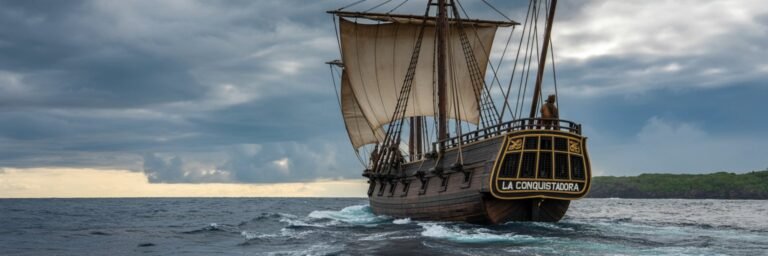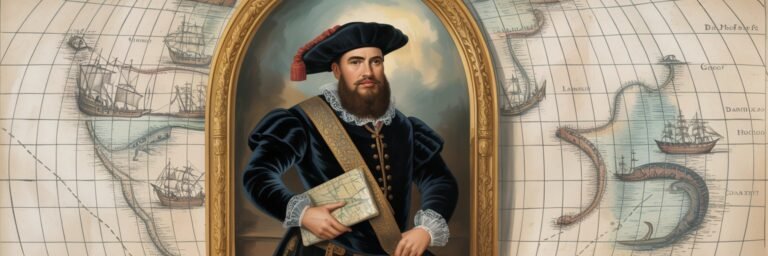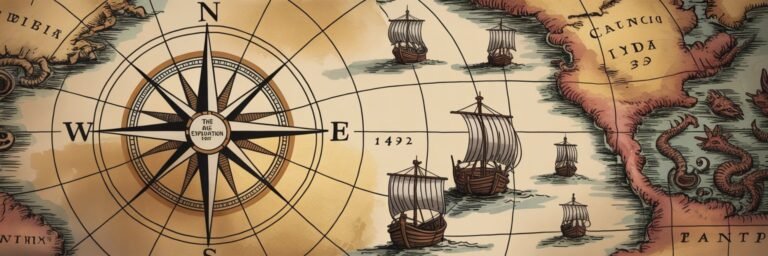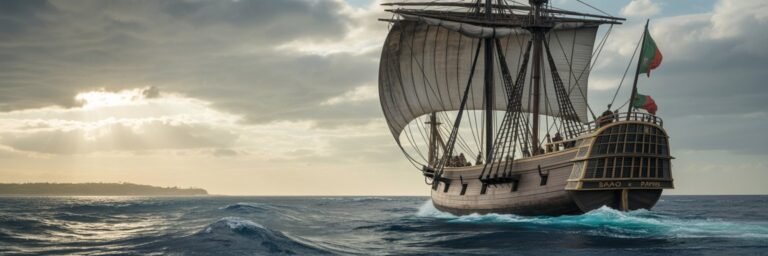INTRODUCTION
The dawn of the Age of Exploration, from the late fifteenth to the early seventeenth century, unraveled an epoch of unprecedented global contact that has indelibly shaped the world as we know it today. The golden epoch was sparked by an irresistible adventure-lust, geopolitical ambitions, spiritual quests, and the insatiable pursuit for wealth and knowledge.
The narratives of legendary explorers, like Christopher Columbus, Ferdinand Magellan, Vasco da Gama, and John Cabot, reverberate with intrigue and gallantry, their voyages catalyzing extensive intercontinental interactions—the transmission of ideologies, scientific knowledge, technologies, commodities, deadly diseases, and even forms of oppression. Yet, as we peel back the layers of time, we are left with tantalizing enigmas, historical controversies, and lesser-known tales that challenge traditional narratives, thus igniting a spirit of exploration within us—an exploration to untangle the deep-rooted secrets entwined in the stories of these brave explorers.
HISTORICAL BACKGROUND
The Age of Exploration is conventionally marked by the launch of Henry the Navigator’s ambitious exploration ventures along the African coast in the early 15th century. However, the seeds were sown earlier, driven by technological advancements in navigation and shipbuilding, coupled with the intellectual revolution sparked by the Renaissance.
The Columbian Exchange, named after the voyage of Christopher Columbus to the Americas in 1492, was an essential facet of the Age of Exploration. Post Columbus’s unintentional discovery of the New World, a vast exchange of people, animals, plants, technologies, and diseases ensued between the Eastern and Western hemispheres.
THEORIES AND INTERPRETATIONS
The Age of Exploration is well-treasured in our collective memory as a time of discovery and daring. Yet, modern scholarship has examined this era from diverse and often critical lenses. Some, like historian Jack D. Forbes, argue that explorers like Columbus didn’t “discover” the New World, as indigenous populations were thriving across continents for millennia. Critics point out the ethnocentric lens through which the exploits of the explorers are often viewed, emphasizing the brutal colonization that often followed discovery.
Although the common narrative credits curiosity and the thirst for adventure as the leading motivators, revisionist perspectives underscore geopolitical competition and the hunger for wealth as pivotal factors. The luxurious wealth of Asia, as depicted by Marco Polo’s stories, became irresistible, and the Ottoman control of traditional land routes sparked the search for sea routes, propelling seafaring expeditions.
MYSTERIES AND CONTROVERSIES
The Age of Exploration is haunted by numerous controversies and mysteries which historians and archaeologists strive to unravel. The ambiguity surrounding Christopher Columbus’s nationality, his voyage’s real destination, and the location of his remains renders him a figure of profound mystery. Alternative theories suggest Columbus may have known about the New World from sources like seafaring Norsemen’s tales, contrary to the prevailing interpretation of an accidental discovery.
Similarly, there exist alternative proposals about who first reached America. Some claim it was the Irish monk Saint Brendan in the 6th century, while others suggest the Chinese Ming Dynasty—long before Columbus—based on controversial evidence in Gavin Menzies’ “1421, The Year China Discovered America.”
SYMBOLISM AND CULTURAL SIGNIFICANCE
The Age of Exploration is symbolic of human audacity, intelligence, and expansion endeavours. It crystallizes the quintessential spirit of exploration, the desire to venture beyond familiar horizons—a theme recurrent throughout history and literature.
Yet, it also symbolizes the darker side of human ambition–colonialism, genocide, and cultural erasure. The voyages opened a Pandora’s box of diseases, alien to indigenous populations, leading to demographic devastations. No wonder then, different cultures perceive this period variably, often reflecting the dichotomy between the colonizer and the colonized.
MODERN INVESTIGATIONS
Modern investigations, aided by advancements in archaeology, paleography, and technology, seek to clarify the complexities of the Age of Exploration. Using underwater archaeology, researchers have unearthed shipwrecks, providing insights into the era’s engineering marvels and seafaring prowess.
Also, DNA analysis and geological dating techniques are shedding light on early contacts. Recent studies of indigenous genomes suggest that the Polynesians had contact with South America long before Columbus. Decoding the Vinland map, purportedly showing Norse exploration of America, has sparked contentious debates.
LEGACY AND CONCLUSION
The Age of Exploration, like a colossal wave, radically reshaped the physical and cultural landscapes of the Old and the New Worlds. It heralded a new beginning, an era of global interconnectivity, sprouting the seeds of globalization.
Through the prism of time, we perceive the paradoxical legacy of the Age of Exploration. On one hand, it spawned remarkable scientific progress, geographical discoveries, cultural exchanges, and economic prosperity. It woven together diverse threads of humanity, creating a tapestry of global history.
Yet, it also unleashed a torrent of colonization, subjugation, and extermination of native cultures. Hence, this epoch serves as a poignant reminder that every step forward carries its echoes of triumph and tragedy. It teaches us to approach the mysteries of history with humility, a reminder of how little we know about the boundless canvas of human history and the courage to continue exploring beyond charted territories—a lesson eminently relevant even today as we march into the uncharted terrains of the future.





